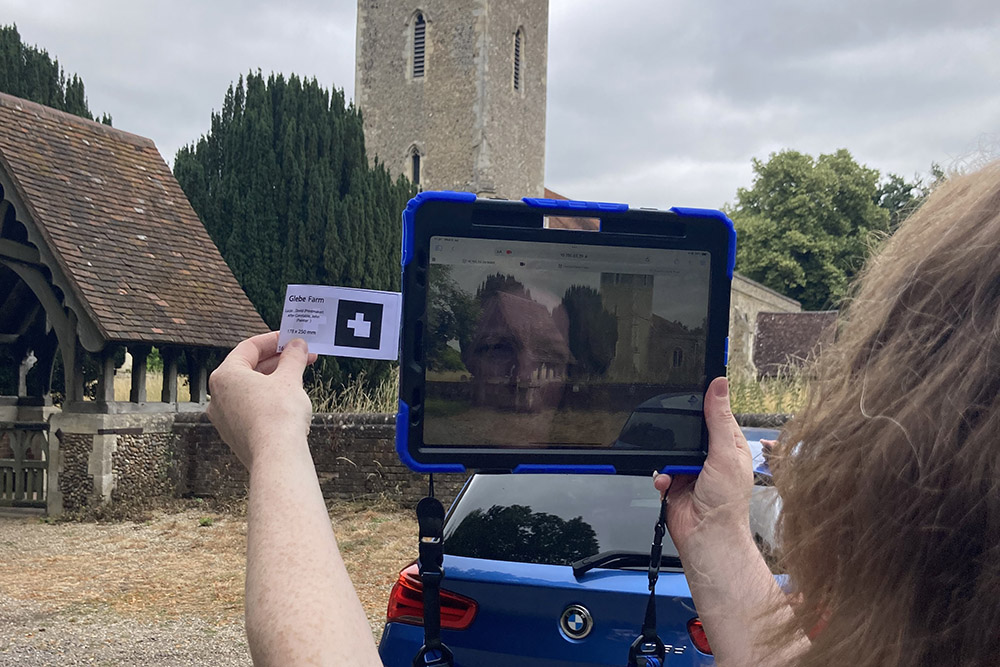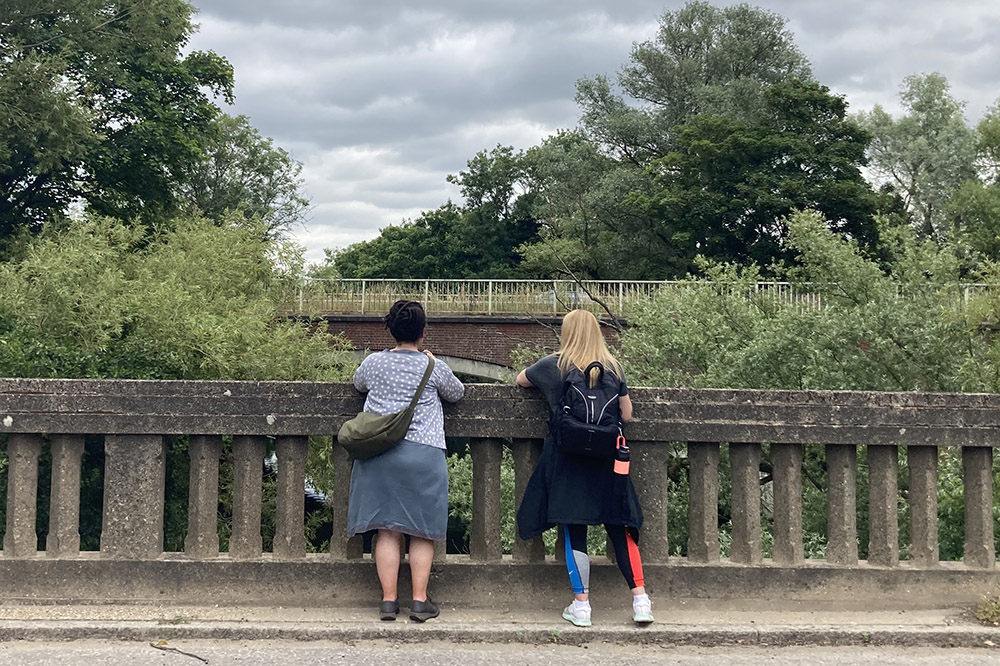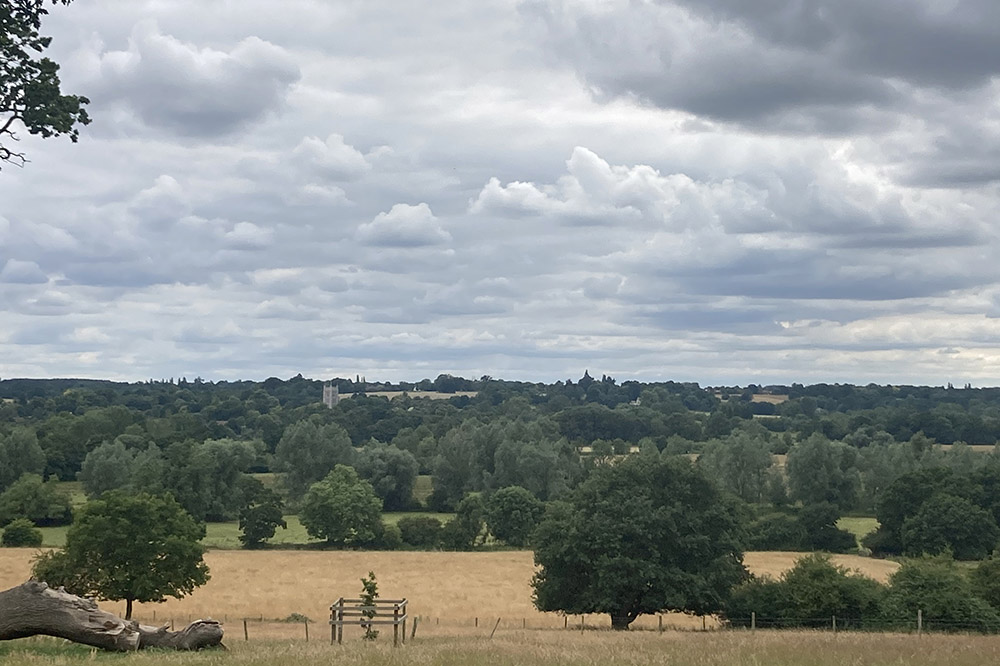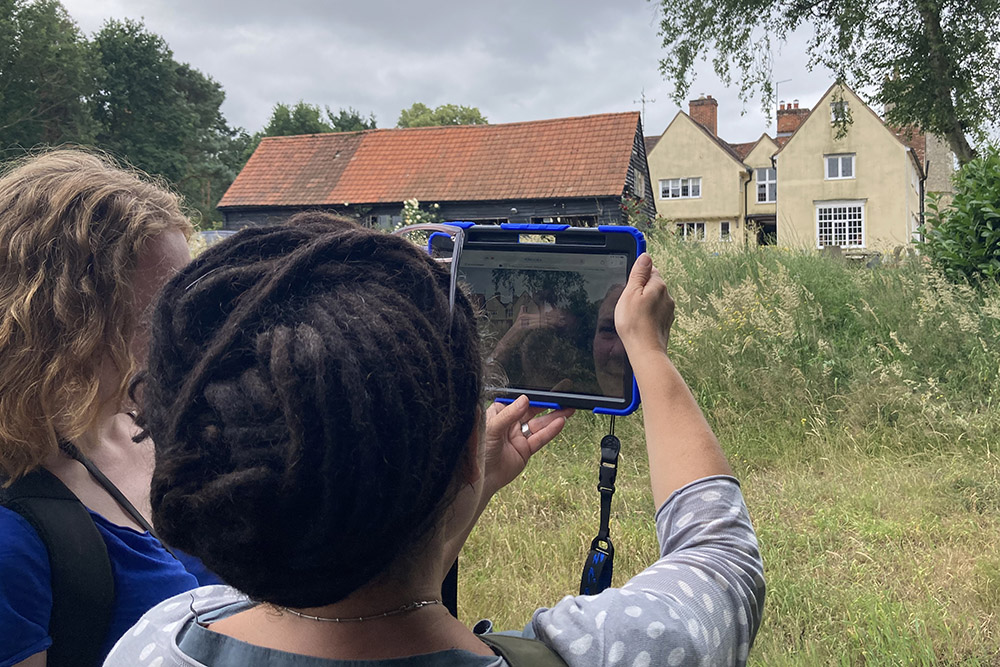Seeing Constable Differently
by Kate Noble
Many words have been written and spoken about the work of John Constable. His life and art are the subject of many an article, documentary programme, book and catalogue. Images of his work are instantly recognisable through multiple reproductions printed on posters, notebooks, mugs and other collectibles. In our visually saturated modern work, how can we ‘see’ his work anew, two hundred years after he lived and worked? The cutting-edge conservation and imaging techniques employed today within our university libraries and museum can help us to see his work differently. They bring us closer to the artist and printmaker to appreciate the grains of the paper, the swirl and smudge of the ink.
As a practice-based researcher situated within an art museum I am interested in exploring the dialogue between people, ideas and artworks. The collaborative methodology adopted within the Walking with Constable project has been designed to help us see museum collections differently. Bringing together curators, experts in digital heritage, learning and participation specialists, archivists, archaeologists, artists, meteorologists and conservators we are interested in exploring different ways of knowing, seeing and making sense of Constable’s prints.

– Viewing prints in augmented reality, Kate Noble
The process of walking in Constable’s footsteps encourages us to slow down, to take time to attend to environment and place. To take note. To look slowly and carefully. Blog posts, interviews, sound recordings, artworks, digital reproductions, overlays and tools, conversations, photographs, maps and walks evoke infinite imaginings and reimaginings. Following the serpentine path of the river, memories and conversations flow alongside one another, weaving in and out, under and above.

– Two fellow walkers stop and look at the bridges and river weaving in the landscape, Kate Noble
On Walk B, the artist Kate Boucher describes what really struck her about the East Anglian Fenland as, ‘how many marks there are in the sky.’ Her words and the evocative impressions of her drawings stay with us as we look up at the dense Suffolk clouds and skies and then again at the marks on the surface of the Constable/ Lucas mezzotints rendered visible in the HD scans we carry with us on our iPads.

– The dense Suffolk clouds and skies of Dedham Vale AONB, Kate Noble
As we look, talk and share perspectives we see something new, something different. We reach a new understanding. In so doing we gain a deeper appreciation of the affordances of the Suffolk landscape in relation to the artists’ work. The digital reproductions and use of mobile imaging devices allowed us to look at Constable’s work in situ, to stand alongside the artist, to experience not just the visual qualities of the image but also the sounds, smells and feel of the landscape from which he drew his inspiration. The experience reminds me of Barad’s writing on the entangled complexities of time, matter and space,
‘Remembering is not a process of recollection, of the reproduction of what was, of assembling and ordering events like puzzle pieces fit together by fixing where each has its place. Rather, it is a matter of re-membering, of tracing entanglements, responding to yearnings for connection, materialized into fields of longing/belong-ing, of regenerating what never was but might yet have been.’
– Karen Barad, TransMaterialities: Trans/ Matter/ Realities and Queer Political Imaginings, 2015
Through this process we re-member, re-imagine, re-trace, re-generate, mapping meanings and experience. Collapsing the walls of the museum and archive to connect people, images and ideas across landscape, time and place.
